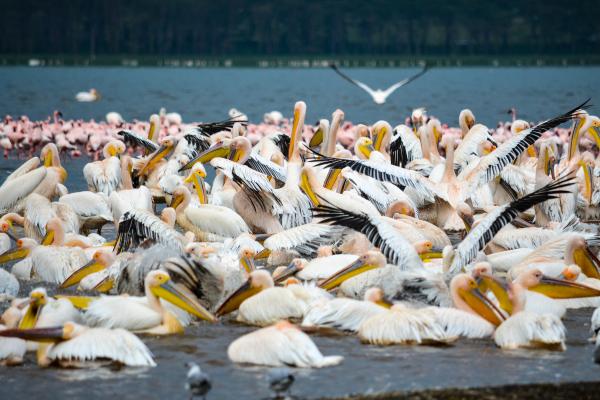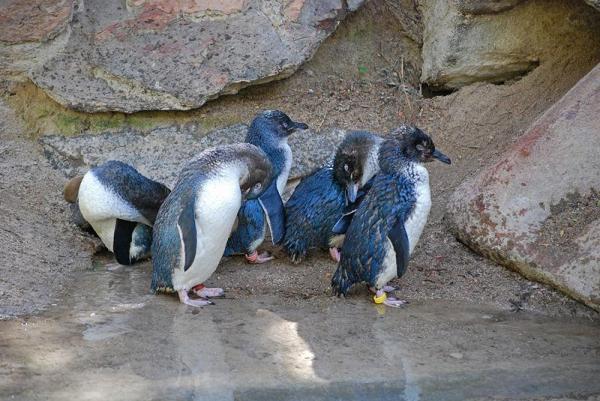
In a biological community, living beings establish various relationships. These include with many biotic and abiotic factors, such as other animal species or even the habitat itself. One of the most important biological relationship is with other members of their own species. This includes those with which they share familial bonds, as well as rivals or neutral non-specifics. The comparative method between species suggests that group formation is due to the two main pressures of predation and limited resources. Living in groups seems to be a response to security and the defense of resources.
We at thedailyECO further explore these interactions by asking what are intraspecific relationships? In addition to explaining the types, we provide examples which can be seen in nature.
What are intraspecific relationships?
Intraspecific relationships are those that occur between individuals of the same species, whether plant, animal or other. They can occur within a single population or between different populations of the same species. These relationships cause individuals to organize themselves into temporary or more lasting group associations, sometimes lasting a lifetime. These are called temporary and perennial intraspecific groupings, respectively.
These relationships have a number of consequences in the lives of individuals. There are a number of pros and cons, but the fact that these associations exist means that the pros are very beneficial. The benefits of intraspecific relationships may include:
- A greater ability to defend against predators or adverse environmental conditions
- Greater ease in finding a partner and reproducing
- A greater ability to search for and find food
- Greater ability to divide labor
Conversely, there are some negatives to intraspecific relationships. These include the competition for resources (water, nutrients, light, shade, etc.) and limited territory when there are too many individuals in the group.
In most associations, conflicts arise. These conflicts may be instigated over:
- Food
- Shelter
- Mates
- Territory
- Other resources
Intraspecific conflicts are usually resolved agonistically through fighting, although a display of dominance may be sufficient to deescalate a conflict. In some intraspecific relationships, complex social relationships are established with a social hierarchy (dominant and subordinate) and individual recognition.

Types of intraspecific relationships and examples
Broadly speaking, we differentiate two types of intraspecific relationships:
- Intraspecies competition: occurs when there are not enough resources (food, territory, etc.) for all members of the population. Conflicts may arise over reproduction, dominance or social standing. The result is often a conflict that ends with expulsion from the group, submission or even death of the individual.
- Intraspecies cooperation: individuals group together to increase their survival rate. Depending on the relationships individuals establish, we distinguish between familial, gregarious, state and colonial associations.
Family associations
Within family intraspecific relationships, family groups are those where the members of a group are related. They originate with the formation of one or more pairs that produce offspring when they procreate. The maintenance of the family association is related to mating, feeding, defense and caring for the offspring. Within these intraspecies relationships, several types of family associations are distinguished:
- Monogamous parentage: consisting of a couple and their offspring. This occurs especially in birds such as the griffon vulture, where the pair bond usually lasts almost a lifetime and they raise the chick together.
- Polygamous parentage: it can be polygynous or polyandrous. It is polygynous if it is formed by a male with many females and their offspring. A single male deer has a harem of several females who care for the fawns. It is polyandrous if the female mates with several males, as is the case with the jacana. The female of this species lays her eggs in nests built by the males, who are also responsible for raising the chicks.
- Matriarchal: consisting solely of the mother and her offspring. This is the case with elephants, where the herd consists solely of females (grandmothers, mothers, daughters, sisters, etc.) and there is usually a matriarch (alpha female). Males are solitary nomads and they are only allowed to approach the herd for reproduction.
- Patriarchal: formed solely by the father and his offspring. This would be the case with seahorses, where the males carry the eggs inside them until they hatch and emerge into the outside world through birth.
- Filial: made up solely of offspring. It occurs in fish and some amphibians. Parents lay many eggs and abandon them. When they hatch, all the siblings form the family association.
If offspring continue to reproduce within an association and more family ties are created, the term clan is used to refer to these family associations. Learn more general information about these processes with our article explaining asexual reproduction in plants and animals.

Gregarious associations
Unlike the family associations, these types of intraspecific relationships do not involve parental or family ties. They are usually temporary and occur when individuals accumulate in a specific location. They may be previously transported by the elements (e.g. insect larvae or cyanobacteria) or by their own volition. It often occurs when animals look for resources to survive when those in their own environment are scarce. Birds that migrate are a good example of this, but it can also be seen in mammals, fish and other animals.
In the case of the goldfinch, these associations occur during times of abundant resources. Watching and eating at the same time is a difficult task, so the individual is more exposed to predation. By associating with other individuals of their species, the vigilance rate increases. In turn, this increases the food intake rate. When resources are scarce, the flock disbands due to internal fights over food.
This doesn't happen in all types of birds and you can learn more about their diversity with our guide explaining how birds are classified.
Eusocial associations
They arise as a response to the division of labor within a population. The individuals within it exhibit morphological differences, relating to the distinct functions they perform. These associations are typical of well-known social insects such as termites, bees and ants. Individuals cannot survive outside the society they have created.
For example, a bee hive can have up to 50,000 individuals descended from the queen bee, the one responsible for laying the eggs. There are other individuals in hives such as drones, the males who fertilize the queen. We also find worker bees, females who do not reproduce and whose mission is to care for the hives and eggs, pollinate, produce honey and feed the drones and the queen.

Colonial associations
Colonies are made up of individuals or zooids. These individual organisms are physically attached to each other and connected by a series of canals, appearing to be a single individual. Colonies arise when individuals reproduce asexually, usually by budding, splitting or fragmentation. There are several types of intraspecific colonies:
- Homomorphic colonies: all individuals or zooids are identical. This is the case with madrepores, a type of coral capable of forming biogeological structures such as reefs, atolls and even islands.
- Heteromorphic colonies: zooids have different physical shapes. The existence of different shapes is due to a specialization within the colony resulting from the need for a division of labor. Siphonophores are an example of heteromorphic colonies. These animals belong to the cnidarian group and have zooids for reproduction, feeding and defense, among others purposes.
Learn more about other cnidarian animals with our article sharing the different types of Mediterranean jellyfish.
If you want to read similar articles to What Are Intraspecific Relationships?, we recommend you visit our Biology category.